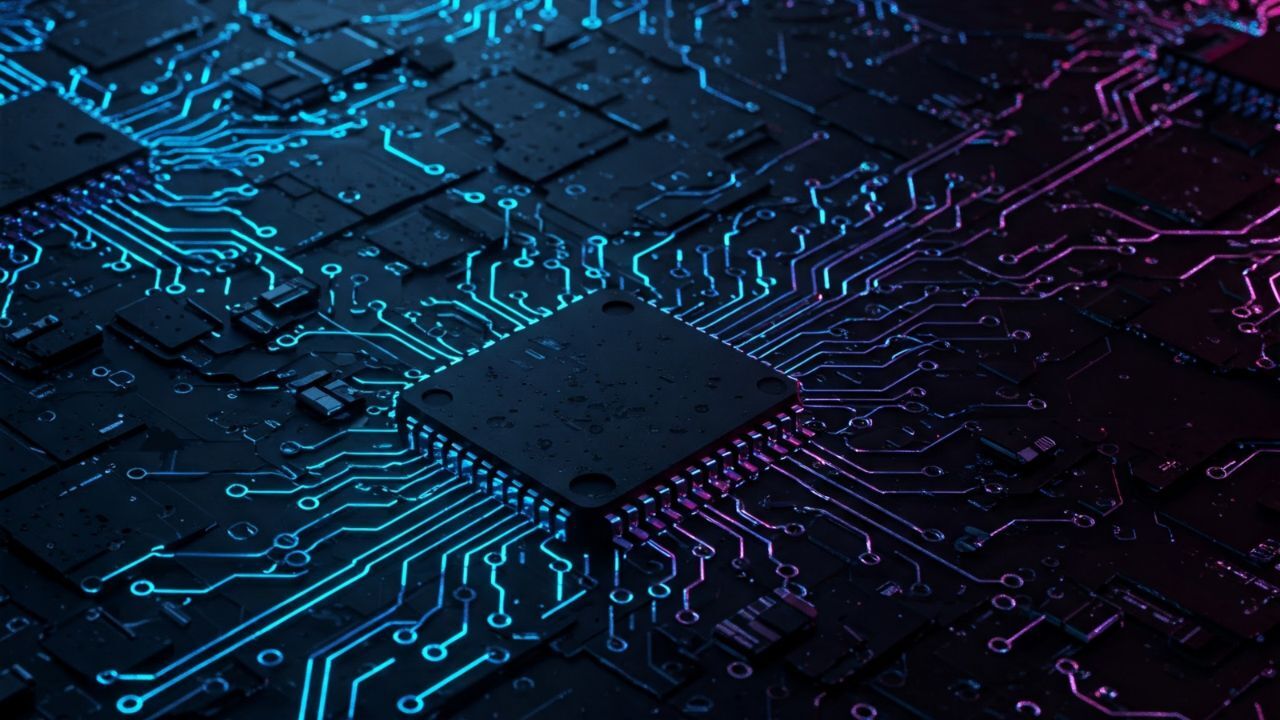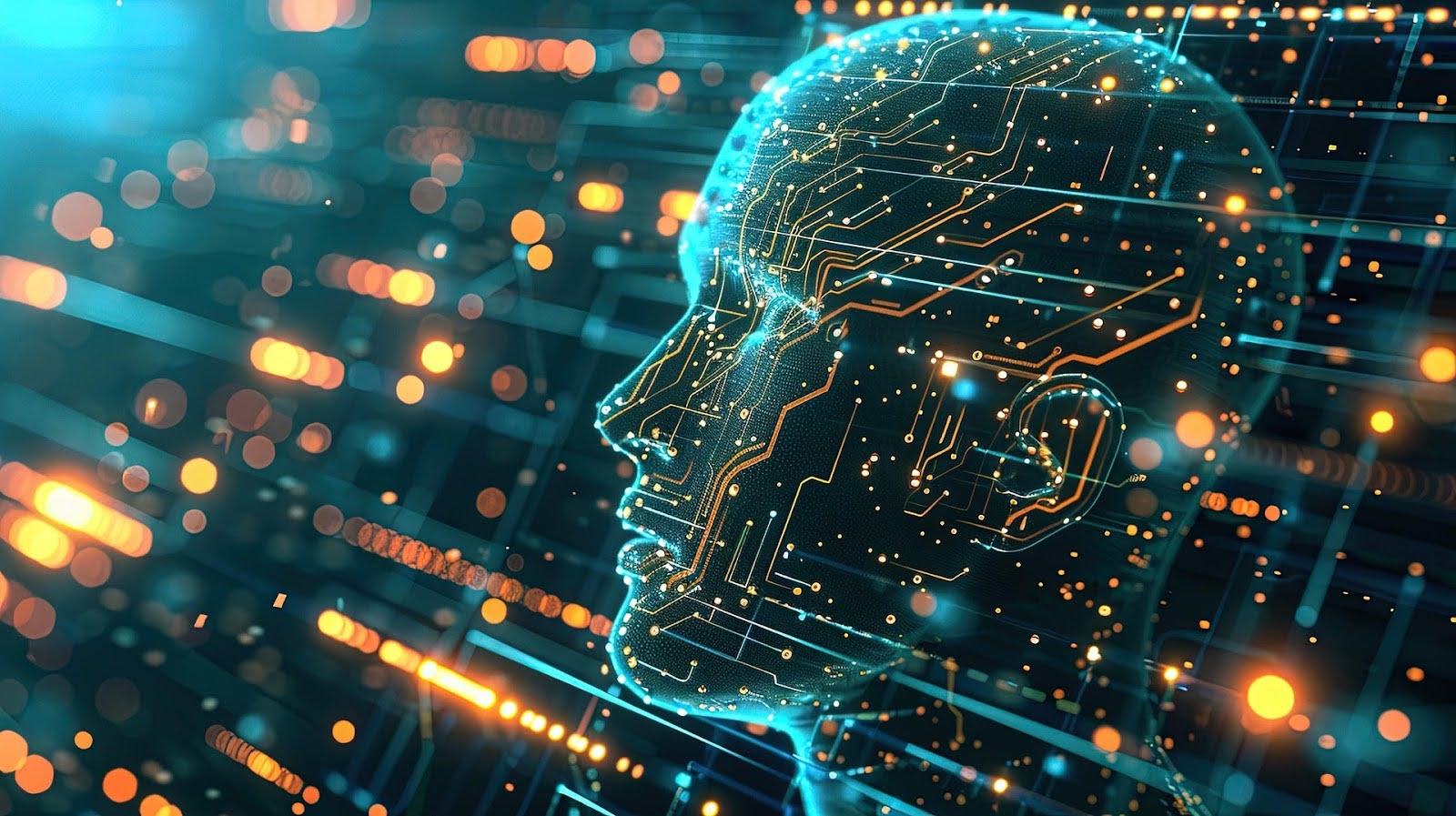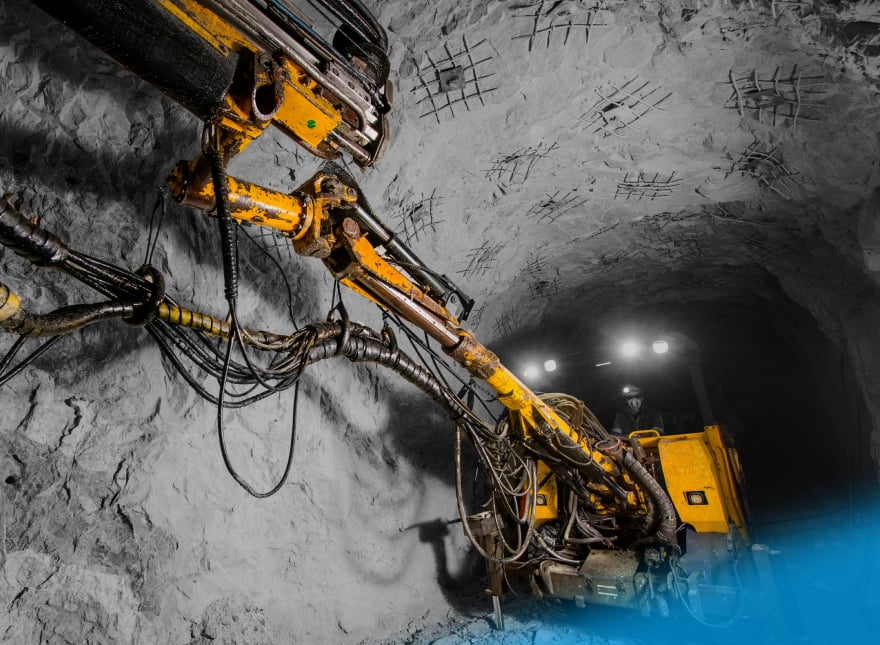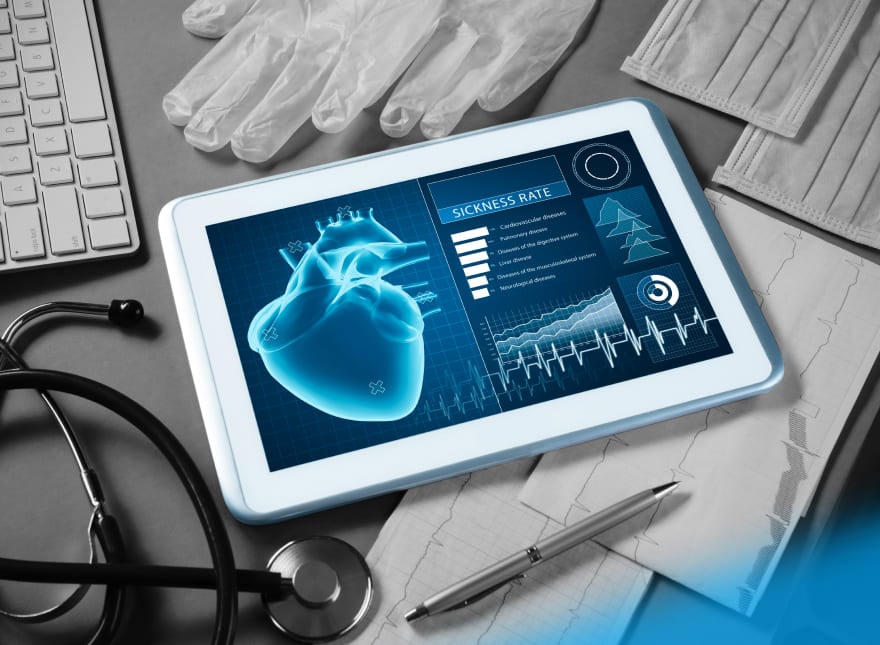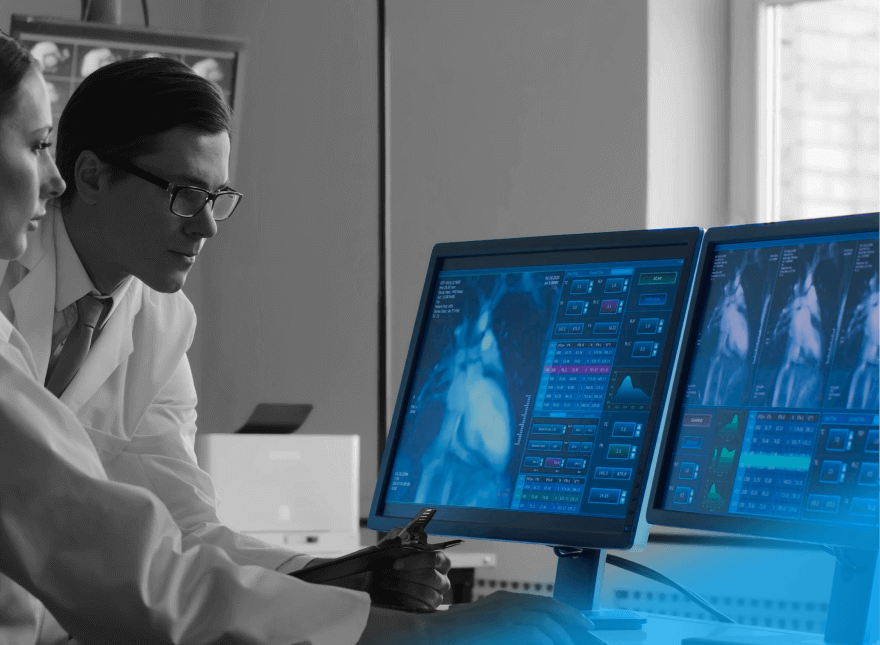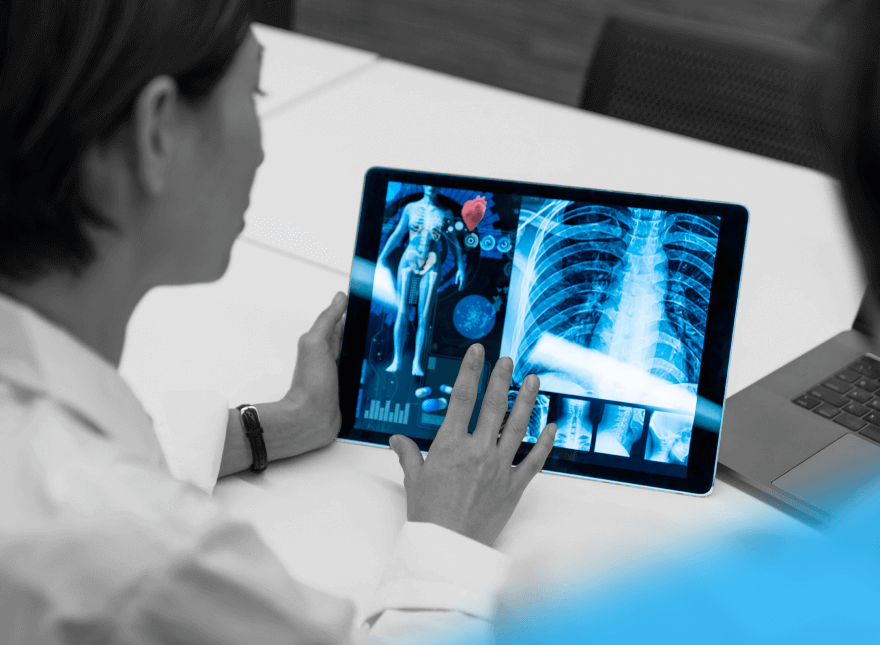Check out our latest blog article: From component to enterprise – modular robotics done right.
Top 5 AI Trends to Watch for in 2021

Artificial Intelligence (AI) is fast gaining momentum across a variety of industries. What once started as the idea of machines coming to imitate the cognitive abilities of human beings has now become a key element of any company’s Digital Transformation. From agriculture, banking, and healthcare to construction, robotics, and space exploration—all industries are benefiting from AI adoption.
According to the Gartner CIO Survey, the number of enterprises implementing AI grew 270 percent in the past five years. 37% of all organizations surveyed are leveraging some form of AI in their business. It is also predicted that about 80% of modern IT solutions will be based on AI and ML by 2022.
Self-learning algorithms and smart machines have already changed the way we live, work, and communicate with the world. Moving forward to a new year in a month, it’s time to dive into the top five Artificial Intelligence trends that will transform the 2021 tech space.
Trend 1: Artificial Intelligence of Things to Pave the Way for the Future
Even leveraged separately, both the Internet of Things and Artificial Intelligence are potent technologies. The convergence of IoT and AI can bring unprecedented opportunities for companies looking to innovate and digitally transform their existing systems in the coming year. While IoT deals with devices and provides a massive amount of data, AI quickly wrings real-time insights from that data and brings the ability to make informed decisions without human interference.
According to Gartner, more than 80% of enterprise IoT projects will include an AI component by 2022. Today, only 10% are utilizing the IoT and AI blend.
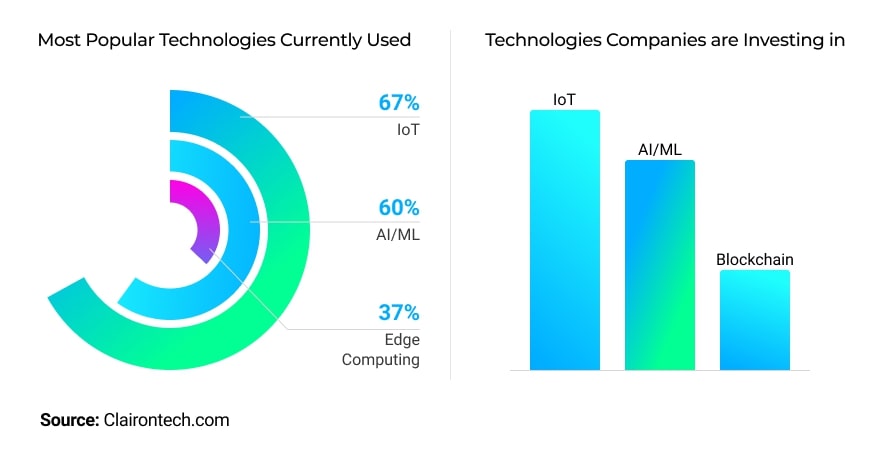
The leading vendors of IoT platforms—namely, Amazon, Apple, GE, Oracle, Google, and Microsoft—already augment IoT with AI. Amazon utilizes AI and ML technologies in their products such as the Alexa suite of voice-activated devices, the Amazon Go, a new kind of store with no checkout required, and Polly, a service that turns text into lifelike speech.
Amazon developers use computer vision, AI algorithms, deep learning algorithms, and sensor fusion in their Go stores. There are cameras mounted along the perimeter of the store that track customers’ movements from all angles. The combination of these elements allows for instant detection of when products are taken off or returned to the shelves. Plus, the AI technology monitors the items as if they were placed in a virtual cart.
Polly is an Amazon text-to-speech AI service. Polly uses advanced deep learning technologies to synthesize speech that sounds like a human voice. To convert text into sound, a user sends a request via the Polly API, and the service immediately returns the audio stream to the application.
With a raft of novel products and the increased demand for enterprise tech deployments, companies should continue exploring the power of AIoT to drive operational efficiency, avoid costly downtime, generate higher performance, and upgrade risk management practices.
AIoT at its Core
IoT-powered devices collect environmental data and transmit it to the cloud. In the cloud, the information is analyzed so that the system can act accordingly. The Act step entirely depends on the Analysis step. That’s where AI plays its crucial role, extracting meaningful insights, identifying patterns in raw data, detecting anomalies, and making operational predictions with greater accuracy.
AIoT in Action
Voice Assistants
Voice assistants are cloud-based services, which manage devices via voice commands. To integrate natural language processing (NLP) capabilities into IoT solutions, developers use pre-trained AI services.
Voice assistants perform tasks by applying various subfields of AI, including automatic far-field voice recognition, wake word detection, speech to text conversion, contextual reasoning, dialogue management, and conversational AI.
Voice assistants can play music, answer trivia questions, make restaurant reservations, turn the lights on and off, etc. The well-known Alexa, Siri, and Google Assistant are the leaders in this market segment.
Since voice assistants take brand-to-consumer interactions to a whole new level, technology companies will continue to invest in them. According to Juniper Research, by 2024 consumers will interact with voice assistants on over 8.4 billion devices, overtaking the world’s population and growing 113% compared to the 4.2 billion devices expected to be in use by the end of 2020.
AIoT Transportation Solutions
As more and more vehicles become connected to the Internet and the cloud, the transportation AIoT ecosystem is growing in size and sophistication. With further AIoT adoption in the transport sector, companies will improve operational efficiency and workflows, optimize maintenance scheduling, and achieve higher standards of sustainability.
Driven by a smart combination of sensors, GPS devices, and AI systems, AIoT helps transportation companies monitor vehicles, reduce fuel costs, identify unsafe driver behavior, and ensure their mobile assets are maintained properly.
Another way AIoT is used in transportation is autonomous vehicles, soon a must-have in all market segments. Smart algorithms interpret real-time data from in-vehicle cameras, lidar and radar sensors, and cloud services in self-driving cars. One such example is Tesla's autopilot systems. They use radars, sonars, GPS, and cameras to gather data about driving conditions. Then, an AI system makes decisions relying on the data IoT devices have collected.
Smart Retail Analytics
Merchandisers and traders seeking to grow sales, optimize stock, make smarter buyer decisions, deliver personalized experience to their customers, and manage their pricing strategies effectively should continue to incorporate AIoT in their business operations.
In retail, AIoT technology is used to gather data about customers and analyze it. Camera systems are equipped with sensors, computer vision and facial recognition capabilities to predict consumer behavior accurately and make decisions about store operations. Smart retail solutions can also suggest dynamic staffing levels to reduce checkout time and increase the cashiers' productivity.
AIoT Robots
The field of robotics has made steady progress in the last few years. The most advanced robots are able to interact with humans while understanding, reciprocating, and expressing certain human emotions. Robots are IoT-enabled creatures by default, but they also possess natural language processing and computer vision capabilities.
With the impact of COVID-19 on the manufacturing industry, companies widely employ robots in their daily operations to combat the impending labor shortage. Augmented with sensors, which facilitate data transmission, and AI algorithms to learn from actual data, they help companies anticipate market changes, increase productivity, save time and costs, and optimize manufacturing processes and supply chains operations.
Moving AI to the Edge
Although the combo of AI and IoT has already proven to be efficient in various application areas, there is a growing need to further speed up the decision making process, analyze data in a secure way, avoid uncontrolled latency, and control network connections. Edge Artificial Intelligence aims to tackle these issues.
Edge AI is technology that helps process data generated by a smart device locally using AI algorithms and edge computing. The device does not need to be connected to the Internet to process such data and makes mission-critical decisions in real-time, in a matter of milliseconds.
Edge AI is trending up in a variety of industries, including healthcare, retail, and transportation, as well as tourism and hospitality. For example, the Japanese car manufacturer Toyota is leveraging existing AI edge robotics designed for car manufacturing to assist people with limited mobility.
Marriott International has partnered with Samsung and Legrand to use IoT and edge AI to create the world’s first IoT-enabled hotel room. The rooms are equipped with multiple responsive IoT systems, applications, and devices, all of which will communicate with each other. Guests can ask a virtual assistant to give them a 6:30 a.m. wake up call via voice commands, ask the room to request additional housekeeping services from the front desk, and even take a shower at the exact temperature specified in their user profile.
According to the Global Edge AI Software Market Growth report, the Edge AI software market could top $ 1.1 billion by 2024. Grand View Research estimates that the total global Edge computing market will grow 37.4 percent per year and will be worth $ 43.4 billion by 2027.
Advantages of Edge AI
Edge AI brings a bunch of benefits, including:
- Protecting data from being intercepted on the way to the cloud
- Saving bandwidth to increase data transmission capacity
- Eliminating data latency and improving user experience
- Enabling autonomous maintenance without data scientists and AI engineers in the middle
Edge AI Current and Future Trends
Edge AI technology is practically helpful in many industries. For example, the manufacturing sector turns to edge technologies to provide proactive maintenance, monitor equipment through video analytics, quality control, and implement production line automation.
In the transportation sector, edge AI helps autonomous vehicles reduce power consumption by increasing battery durability and process data and images in real-time for traffic signs, pedestrians, or vehicle detection.
Edge AI can eliminate the delay caused by data transfer, thus improving customer experience and IT system reliability. With the algorithmic processing carried out at the edge, surveillance cameras will be able to detect suspicious activities in real-time, enabling a more efficient and less expensive service.
The deployment of 5G-based edge solutions will further increase data transmission speed and eliminate latency. Companies will easily manage workloads across a massive volume of devices.
Trend 2: Internet of Behaviors to Stay Atop of Behavioral Insights
The Internet of Behaviors (IoB) is also among the top AI technology trends that will shape enterprise operations in 2021. As per Gartner, the individual activities of 40% of the global population, which is more than 3 billion people, will be tracked digitally to analyze and influence our behavior. Gartner also predicts that by 2026, over half of the world's population will be subject to at least one IoB program, whether it be private, commercial, or governmental.
Understanding IoB
The Internet of Behaviors is about using data gathered by IoT to study and change human behaviors, preferences, and interests. IoB makes it possible to properly understand behavioral data and apply those insights to create and market new products, all from a human psychology perspective.
IoB can collect, process, and analyze data from different sources, including commercial customer databases, citizen data from government agencies, social media, public domain deployments of facial recognition, and location tracking services.
IoB Potential Use Cases
IoB is still in its early days, but some companies have already leveraged the technology during the COVID-19 pandemic to monitor employee behavior in the workplace. For example, some businesses installed sensors and RFID tags to determine whether employees were washing their hands regularly. Computer vision algorithms detect whether employees are wearing masks, and thermal imaging solutions identify those with a fever.
Transportation companies can employ telematics IoB solutions to comprehensively track driving behavior, from driver distraction, harsh acceleration and cornering to sudden braking. This data allows companies to improve driver performance, routing, and safety.
Mobile health apps that track diet, mobility, sleep patterns, heart rate, and blood sugar levels improve health behaviors. They collect various health data, examine it, and prompt users into specific behaviors, like increasing calorie intake, adjusting exercise sessions, or sticking to a sleep schedule. Having this data at hand can help health companies develop and promote new assistive services, build custom-fit insurance policies, and create healthcare products that benefit users and providers alike.
Trend 3: Self-Piloted AI Drones to Perform Tasks without a Human
Automated surveillance, inspection, and delivery drones are becoming increasingly common as businesses are looking for new ways to integrate innovative solutions into their daily operations. Morgan Stanley predicts that the drone industry will reach $1.5 trillion by 2040.
Today, drones are evolving to become powerful business tools, creating market opportunities that are too large to ignore. The rising use of drones will help companies gather data from hard to reach places even more quickly and accurately, manage costs, control risks, increase employee safety, and influence business outcomes.
Computer vision plays a pivotal role in autonomous flying machines, giving them the ability to hover in the air, detect objects, and keep moving along a defined trajectory. They are also equipped with high definition video cameras, back-end software, face recognition capabilities, GPS trackers, thermal infrared video cameras, sensors, and radars. Drones sense the world around them using in-built cameras and sensors. The data collected during flights is analyzed by deep learning algorithms to extract actionable insights and then utilize it for specific purposes.
It is estimated that 60% of the total drone market revenue comes from enterprises—particularly, manufacturing, construction, and energy companies.
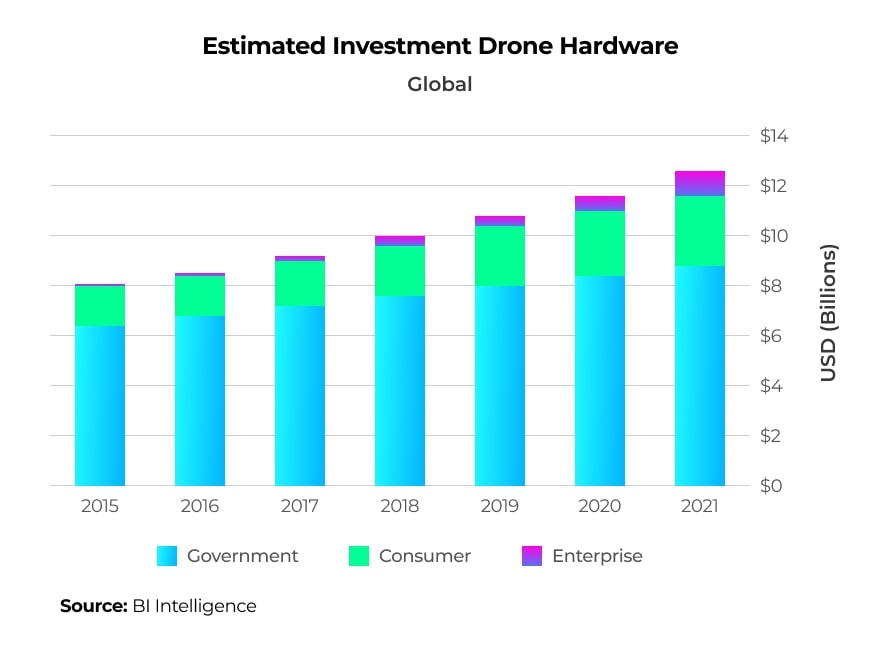
Industrial companies have already reaped the benefits of using drones in their operations. Businesses employ drones to perform asset inspections and remote equipment maintenance, transport cargo, explore confined spaces, carry out soil analysis in agriculture, fulfill disaster management responsibilities—the list is endless.
Drone Use Cases
Agriculture and Hi-Tech Farming
The potential of unmanned aircraft in agriculture is extensive. The UN projects that the world's population will reach 9.7 billion by 2050, causing agricultural product consumption to rise by 69% between 2010 and 2050. Given this, farmers should investigate new technologies to improve agricultural productivity.
Drones have the potential to enhance or take over many agricultural operations, including soil analysis, crop monitoring and growth prediction, vegetation index calculation, livestock monitoring, seeds sowing, irrigation management, and fertilization.
For example, Sentera, a Minnesota-based agricultural imagery software company, manufactures a wide range of UAVs equipped with sensors and near-infrared cameras. Sentera drones generate multispectral images of crops to track changes in their health and maturity. They also produce 3D maps of fields to design seed-planting patterns, and carry out soil analysis to help agronomists assess nitrogen-level management.
Drones in Construction
While dozens of industries use drones, the fastest-growing adopter is the construction industry. Homebuilders are at the forefront of the technology’s use for aerial photographs, mapping the topography, catching initial mistakes, and tracking progress during the development of sites, complex inspections, and preliminary surveillance before launching building activities.
DroneUp offers a diverse suite of products for construction businesses, including flight services, data analysis, drone program development, regulatory consulting, training, equipment, and Part 107 drone delivery. The company’s drones are used to assist enterprises in monitoring buildings, tracking progress, inspecting roofs, construction sites, mining operations, and utilities.
Shipping and Delivery Drones
Delivery drones are growing in popularity, especially among retailers and grocery chains. This year, Amazon received federal approval to use drones to deliver packages over a short distance, allowing the giant to reduce delivery times to 30 minutes or less. Walmart, Google, FedEx, and UPS are also on the way to leverage the opportunity of unmanned delivery.
The average lifting capacity for professional drones is from 20 to 200 kg, which means they can carry not only food and medicine, but also heavy parcels and packs of humanitarian aid.
Trend 4: AI in Cybersecurity to Reduce Attack Vectors
Over the last years, cybersecurity software vendors have been employing AI to detect security risks and prevent systems from falling victims to attacks. AI in the cybersecurity market is projected to reach $38.2 billion by 2026, growing at the highest CAGR of 23.3%.
Information security experts predict that the use of AI and ML technologies could allow security systems to identify and respond to threats in real-time. These technologies can gather data, which enables systems to act proactively rather than reactively to security threats.
As the amount of data is growing exponentially and big data sets are becoming more accessible, the number of cyberattacks will also increase in 2021. AI tools and platforms are already in place to help businesses enhance enterprise security measures. Companies adopt AI-powered cybersecurity solutions to collect data from internal systems, scan emails for indications of phishing attempts, and automate network data analysis to keep their digital assets safe.
For instance, Google employed deep learning algorithms on its cloud video intelligence platform. The platform analyzes the videos stored on the server based on their content and context. Then, if malicious activity is detected, AI algorithms send alerts to security managers.
However, Artificial Intelligence is set to not only increase the effectiveness of security teams but assist cybercriminals in launching new types of attacks. Hackers utilize AI and ML tools to find vulnerabilities in systems, test their malware, crack passwords, get access to storage devices, and open data on the internet. As such, in 2021, organizations should continue to leverage the power of AI in their security deployments to shield from new forms of cyber threats.
How AI Works for Cybersecurity
AI in cybersecurity is not just about merely applying algorithms to identify potential threats. Security personnel can use it to analyze cyber threats better and respond to incidents with greater speed. The significant security benefits AI brings to enterprises include:
- Detecting malware and ransomware and preventing cyberattacks
- Identifying recurring incidents and remediating them
- Understanding the origination of cyberattacks by scanning data across the internet
- Analyzing mobile endpoints for cyber threats
- Automating routine security tasks
- Сreating secure biometric logins by scanning fingerprints, retinas, or palmprints
- Applying AI-led authentication frameworks to modify access privileges based on the network and location of the user
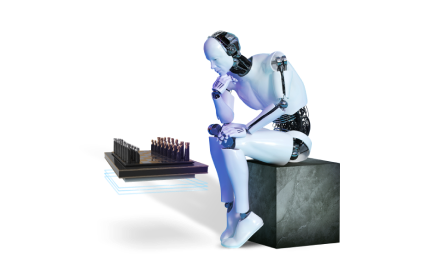
Trend 5: The Rise of AI to Transform Healthcare
AI breakthroughs will continue to play out in the healthcare sector next year. AI-powered systems drive the industry forward: they make medical services more accessible, enable healthcare data interoperability, enhance patient experience, improve patient outcomes, and reduce the overall healthcare delivery costs, thus changing the lives of millions of people for the better.
The growth in the AI health market is expected to exceed $34 billion by 2025, which means this technology will shape almost all facets of the healthcare industry, and providers will incorporate AI in their IT systems at an unprecedented pace.
AI Applications in Healthcare
Healthcare AI can act with ultra-accuracy and deliver cost-effective medical care at scale. The Harvard Business Review predicts that the technology will become prevalent in 90% of hospitals in the next few years. Below are the top ten AI applications reshaping the healthcare industry right now:
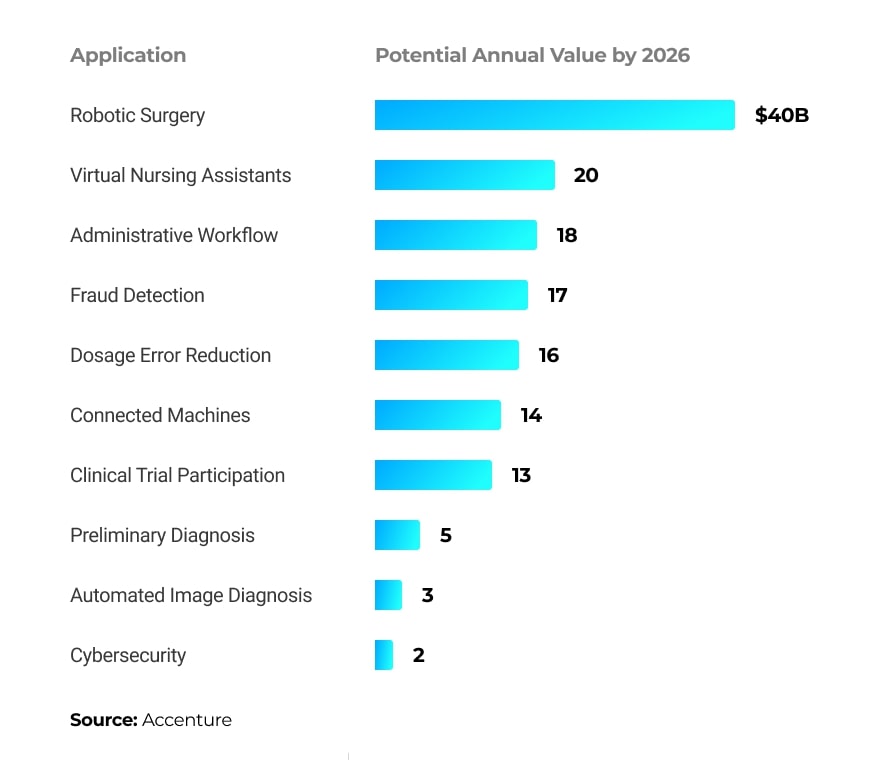
Using Artificial Intelligence against COVID-19
The COVID-19 pandemic will also shape the course of technology-driven change over the next year. In this regard, healthcare organizations should keep an eye on AI advancements to deal with the pandemic’s impact on the industry.
Developing a Vaccine
According to the Brookings Institution, when working on new vaccines, the goal is to insert strongly immunogenic viral fragments to cause a response from the immune system. AI can help identify viral components that have the properties needed to accomplish these goals. The precision, efficiency, and speed of the technology cannot be achieved by immunologists alone.
Recognizing Masked Faces
Based on convolutional neural networks, cameras equipped with deep learning algorithms can identify individuals wearing face masks. Data science engineers utilize face-eye-based multi-granularity and periocular recognition algorithms to enhance facial recognition capabilities. The algorithms identify such face features as forehead, face contour, ocular and periocular details, eyebrows, eyes, and cheekbones, and recognize faces covered with masks with up to 95% accuracy.
Thermal Screening
Thermal imaging systems and no-touch infrared thermometers may be used to measure a person's temperature. AI-driven fever screening devices ensure accuracy while checking a crowd of people to identify those with elevated body temperature. Thermal screening has the potential to limit the spread of COVID-19 infections.
Final Words
It is exciting to see how AI-driven next-gen technologies continue to dominate and transform the world around us. 2021 looks to be another year of vast proliferation and expanding use cases for AI. To get maximum value from AI deployments, enterprises should explore the way forward and focus on the latest trends to maintain a competitive edge.
More articles on the topic
